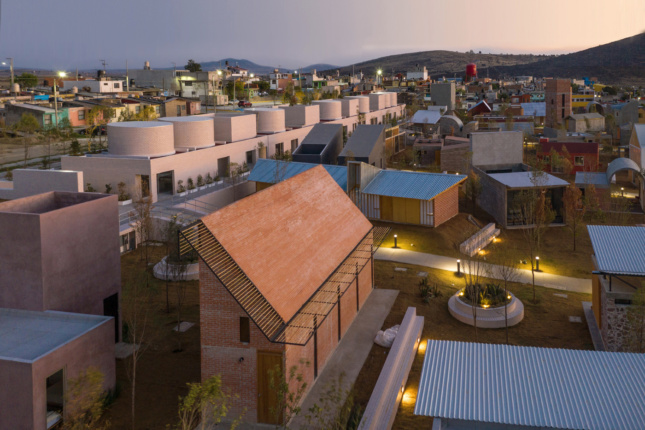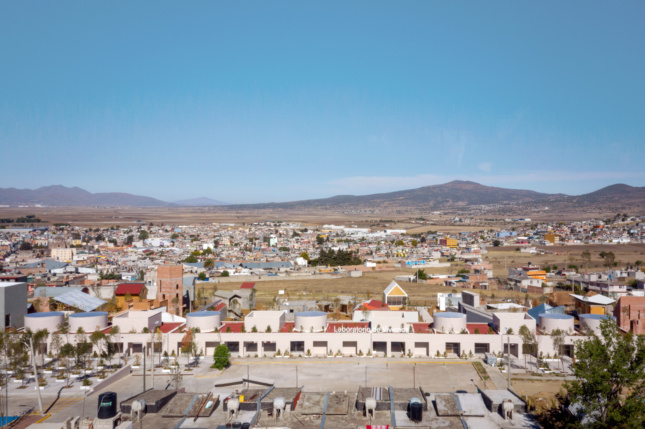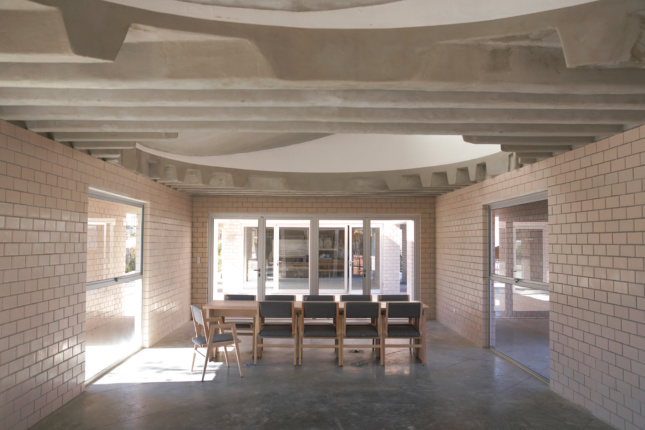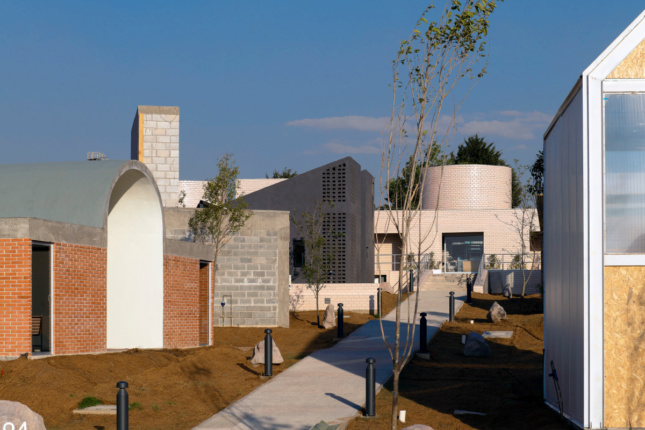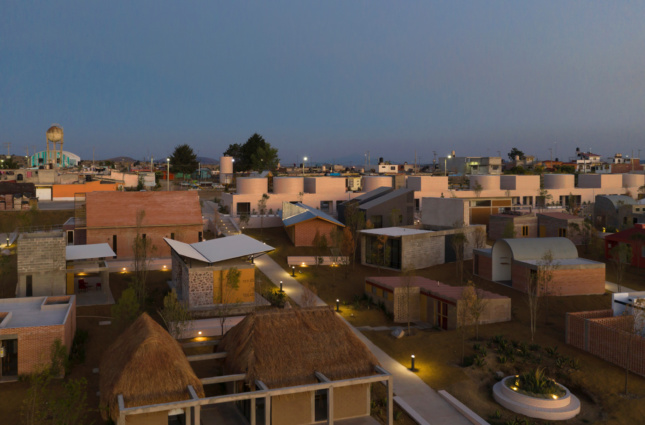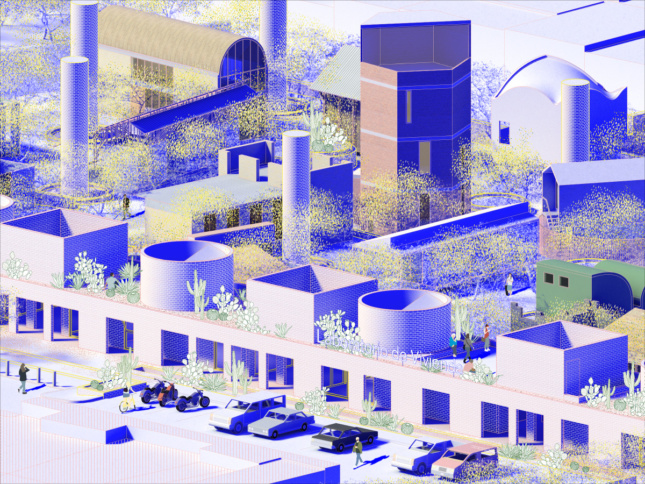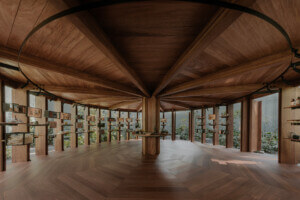At the heart of social housing in Mexico is a contradiction: Flimsy houses built far from city centers sit empty, while millions of Mexicans are still waiting to use publicly financed housing credits. Developers continue to replicate the much-maligned cutter-cut model to keep costs down. But how can new construction not just meet the bottom line but satisfy the needs of low- and middle-income families?
That is the question Carlos Zedillo and Julia Gómez Candela set out to answer at the Research Center for Sustainable Development of the National Workers’ Housing Fund Institute (Infonavit). After several years of research and design, they inaugurated the nine-acre Housing Laboratory in Apan, Hidalgo, in November 2018. The laboratory is made up of 32 prototype homes that explore new typologies for social housing to meet the needs of Mexico’s diverse cultures and climates. Infonavit partnered with Michael Meredith and Hilary Sample of New York–based architecture firm MOS to execute the ambitious project.
“For a long time, developers have built the exact same housing in the north of the country as the south, without thinking about climate or materials,” said architect Gómez Candela in an interview by phone.
That’s why the same boxy, concrete block homes dot the outskirts of almost all Mexican cities. Homes as small as 325 square feet stay within the budget, but are hardly adequate for families.
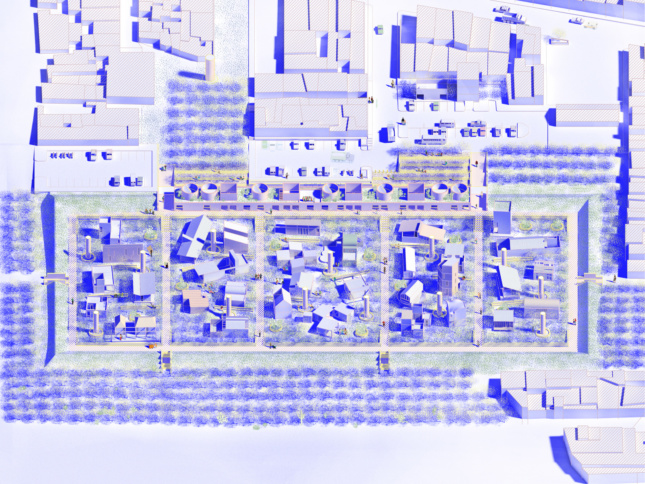
Mexican workers gradually build up credit with Infonavit to finance their first home purchase. Infonavit used to build housing, but since the 1990s it plays the role of financer—workers use their Infonavit loans to pay for houses built by private developers.
Along the way, architects’ role in the process diminished. Gómez Candela says that as director of the research center, the Yale-educated Zedillo set out, “To get architects to redirect their attention back to social housing in Mexico.”
The research center began with an exhaustive study of the state of social housing in Mexico, identifying where the supply of homes was failing to meet demand. Then they selected 84 counties with high rates of Infonavit credit holders who had not yet bought homes. The target counties represented the nine climate zones of Mexico.
The research center then worked with MOS to solicit proposals from around the world, settling on 32 prototype homes for the Housing Laboratory. Architects including Enrique Norten, Tatiana Bilbao, and Fernanda Canales designed houses for the project.
The laboratory was conceived in Apan, a small town two hours to the east of Mexico City. Built on land owned by Infonavit, the site’s proximity to the capital allowed frequent visits. Towns and cities like Apan, in the outer limits of the Mexico City metro area, are usually known for drab, uniform housing. The small village of prototype homes is a welcome variation.
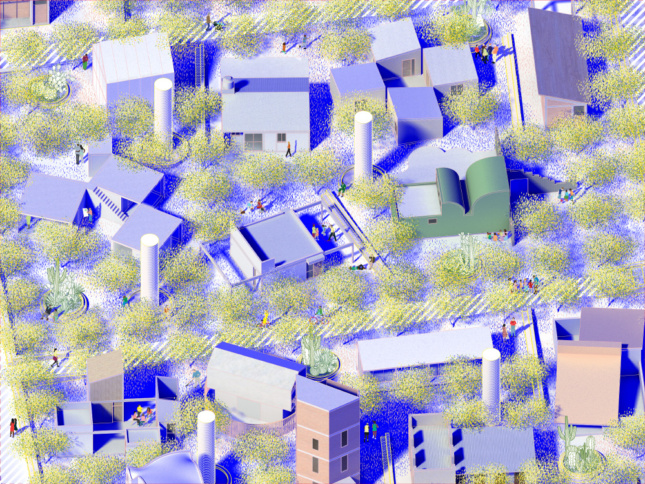
The houses include vernacular architectural styles from around Mexico, including adobe, thatched roofing, and Mexican timber, designed with the country’s different climates in mind; from the humid, tropical south to the arid, hot north. Each architect described their inspirations and reference points, from local architectural styles like the wooden cabins known as trojes in the state of Michoacan to self-constructed housing.
Collaborating with MOS allowed the research center to learn from their extensive experience designing housing.
The Apan Housing Laboratory shows how developers could build high-quality housing within the tight budgets of Infonavit credits. It is only natural that Gómez Candela says cost was the greatest difficulty in the international collaboration.
“In Mexico, we are used to building with very little money,” she says. “With our colleagues from the United States and other countries, we kept having to say, ‘Make it cheaper!’”
The extra effort was necessary to convince developers that the models are feasible. Even so, developers have been slow to adopt the ideas proposed in the laboratory.
“They [developers] still think it will be more expensive to build this way, even if we showed them otherwise” says Gómez Candela. “The numbers do add up.”
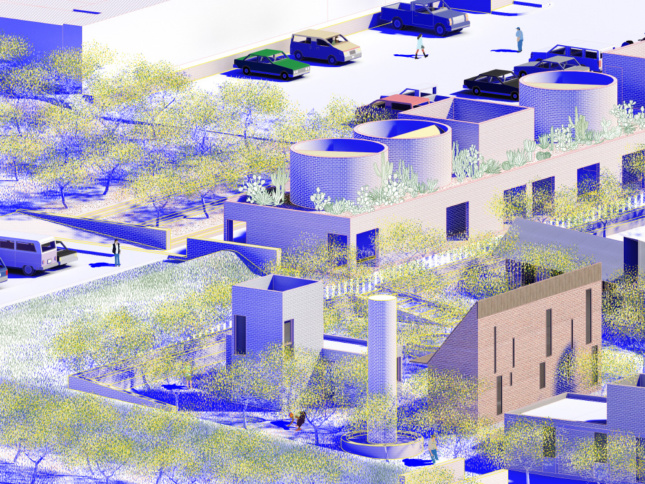
Most visitors to the Housing Laboratory are students, urban planners and developers. Gómez Candela and Zedillo both left Infonavit when the new federal administration entered in December 2018. But the laboratory remains open and the floor plans are available online under open access.
The laboratory is the start of a long process to refocus social housing in Mexico on the experience of the residents, not just efficacy for the builder. The research center’s work is seeing results, as Mexican architects focus more energy on designing housing.
Gómez Candela is optimistic, saying, “The architects we worked with have continued to champion the cause of housing in Mexico.”






